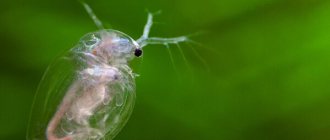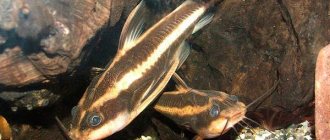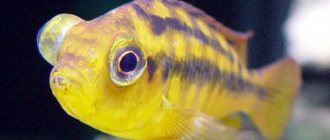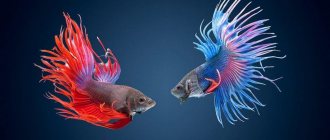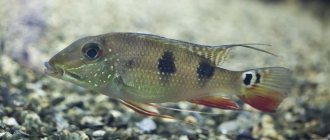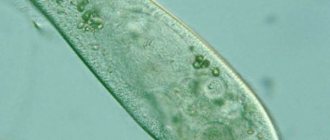Crustaceans (Crustacea) are a subtype of arthropods according to the modern classification. Previously they were classified as a class. Crustacean species include many well-known representatives: daphnia, crabs, shrimp, krill crustaceans, lobster, crayfish, etc. About 73,000 species of Crustacea are known.
Crustaceans mainly live in bodies of water; their representatives have adapted to many types of aquatic ecosystems. Among the crustaceans there are many land dwellers (woodlice, certain varieties of crabs, craboids) and parasitic species. The wet soils of the tropics are inhabited by some representatives of amphipods. Species of crustaceans are represented by mobile forms, but in the class Maxillopoda there are representatives whose adult individuals are characterized by an attached lifestyle, forming a calcareous shell. These are sea acorns (Balanomorpha), which include 12 families, among which the most famous is the genus Balanus.
Other representatives of barnacles (Lepadomorpha) are divided into 3 families. Stationary crustaceans are found in most climate zones (temperate zone, tropics, subtropics). Among barnacles there is a group of parasitic forms that settle in the shells of mollusks, for example, species inhabiting the Sea of Japan.
General characteristics of the class
The sizes and shapes of representatives of the class are diverse and can vary from the smallest (0.15-0.3 mm) to gigantic (1-2 m). However, all crustaceans have a similar body structure, which consists of the following sections:
- head
- abdominal
- chest
Important! The largest representative is the Japanese spider crab. Biologists recorded one individual that weighed 22 kg, and the length with elongated limbs was approximately four meters!
Among the diverse representatives of the class of crustaceans, one feature common to all can be identified - a strong exoskeleton. It serves as a frame for internal organs and protects the creature’s body from damage, compensating for some species’ poor maneuverability. Moreover, most subspecies can move and have jointed limbs, which is why the type is called “arthropods”.
Rice. 1. External structure of a crustacean Such a mobile exoskeleton is a thick keratinized tissue, which is dominated by chitin. In large representatives of the class - crayfish, crabs and lobsters, chitin is strengthened with calcium, forming a strong and reliable shell.
Important! The remains of fossil crustaceans are found in different parts of the world and date back to the Cambrian period (540-1 million ago). Some species of shieldfish (freshwater crustaceans), without changing their structure and appearance, remain the same as 200 million years ago.
Most crustaceans breathe through gills. However, many representatives have adapted to life on land and can leave the water from time to time if the air humidity is high. For example: land crayfish, wood lice and crabs. Some varieties of the class are immobilized and lead a parasitic way of life. For example: sea lice, barnacles and quinques.
Japanese spider crab
Without knowing that such individuals exist in the class of crustaceans, it is difficult to imagine that this animal, more like a huge spider, is none other than the largest crustacean in the world - the spider crab. Natural habitat is the waters of the Pacific Ocean belonging to Japan. That is why they began to call it “Japanese”.
The orange body (up to 80 cm in length) of the huge arthropod is similar to the body of a crab, and the presence of five pairs of legs makes it look like a spider. The weight of the giant crab is 20-40 kg, and if the limbs are straightened, the length between the ends of the claws will be 4-6 m. Nature has worked on it and turned a pair of limbs into long, up to 40 cm, claws. The limbs, like the body, are orange, with white spots visible on them.
Their usual depth is 200-300 m, but they have also been encountered at a depth of 800 m. They rise closer to the surface in the spring, when they lay eggs.
Interesting! The fertility of the crustacean is very high - the female lays about 1.5 million eggs in shallow water. Such an amount is justified for the preservation of the species - fish love to eat caviar, and young crabs become prey for all kinds of marine predators. Not everyone survives to the point of puberty, i.e., ten years of age.
Spider crabs have no problems with nutrition - they eat shellfish and fish, and adults are not averse to eating carrion. In this regard, the meat of young crabs is considered the most valuable and tasty. Tender dietary crab meat is expensive, but despite this, it is present in the cuisine of many nations.
As exotic marine animals, it has become fashionable to keep giant crabs in an aquarium - caring for them is simple and uncomplicated, they are docile in nature and not aggressive.
Crab fishing has recently increased significantly and if the process is not regulated, the population may decline to a minimum.
Interesting Facts:
- at a young age, in order to grow, the crab must shed its hard shell, and the soft one that is under it must have time to inflate before it becomes dense;
- if he has lost a leg, then a new limb will grow in this place;
- the joints on the limbs are arranged in a special way - the crab can only move sideways;
- life expectancy is approximately 100 years.
Crayfish
The most common species and typical representative of crustaceans in our area. Lives in flowing and freshwater bodies of water. The dwelling is built in the roots of coastal trees, under stones and in burrows dug under water. Hunts and feeds in the dark.
Structure
Like most representatives of the decapod order, crayfish has the following structural features:
- The thoracic region of the skeleton and the head
are connected so that the cephalothorax is formed. - The front of the head
is pointed and has a sharp spike at the end. - The two elongated antennae on the top of the head
are organs of touch; the cancer uses the second pair of small antennae on the head for smell. - The eyeballs
at the base of the head are on special stalks and consist of many faceted ocelli. Thanks to this arrangement of the organs of vision, the crustacean looks in different directions without turning its entire body. - The next three pairs of limbs
form the maxilla. - Down the body are ten walking legs
, the upper pair of which are claw-shaped and serve offensive and defensive functions.
Rice. 2. Broad-toed crayfish
Circulatory system
It is not closed and consists of blood vessels and a sac-shaped heart, which is located on the back.
Breath
Crayfish breathes with the help of gills, which are located on different sides of the cephalothorax and are reliably protected by the shell. Oxygen, entering the blood, enriches the body of the cancer and is released into the environment as carbon dioxide.
Excretory system
The excretory organs are represented by two green glands, which are located in the head of the body. Excretory channels pass from them to the base of the antennae, through which the crustacean is freed from processed substances.
Nervous system
Even such a creature has its own primitive response system. It consists of the peripharyngeal ring and the ventral nerve cord.
Nutrition
Crayfish are omnivores and are popularly called water orderlies. The digestive system and the process of eating food itself has the following features:
- The food crushed by the jaws passes into the stomach through the pharynx and esophagus;
- The stomach consists of a chewing section, where food is ground by chitinous teeth, and a filter section, where it is filtered and passes further into the intestine;
- The final absorption of nutrients occurs in the digestive gland.
Reproduction
Crayfish are heterosexual creatures. Males are larger and more aggressive than the female half of the species. Females lay eggs and attach each one to their abdominal legs. They incubate the eggs all winter, so that young offspring appear at the beginning of summer. The female carries the babies on her legs for a long time after the eggs ripen, until they get stronger and leave her after a few molts to create their offspring.
Rice. 3. Eggs on the abdominal limbs of the female
Palm thief (coconut crab)
The coconut crab is the largest land crustacean. It is called crab because of its large size, incomparable to the size of crayfish, and the word “coconut” in the name appeared because of the love for coconuts - they form the main part of the diet. The name "coconut crab" actually refers to a hermit crab from the order of decapod crustaceans.
It was believed that he was able to climb a tree and cut a coconut with his claw so that it would split when it hit the ground; if the nut did not crack, then it was as if he could split it with his claw. In reality, everything is much simpler - the crab finds fallen and cracked nuts and feasts on them. The claws are needed to release the pulp from the shell.
The largest number of unusual crustaceans is found on Christmas Island in the Indian Ocean. There are much fewer of them on other islands of the ocean.
Information! The body of the coconut crab reaches a length of 40 cm, and the claw in the straightened state is more than 90 cm long, weighing about 4 kg.
The front, most powerful and massive, pair of legs is equipped with sharp claws capable of cutting through thin bones. With the help of the second and third pairs of limbs, the crab successfully overcomes inclined and vertical surfaces, and the last pair is invisible under the shell - males need it during the mating period, and it helps females during the period of gestation.
An adult lives only on land - it cannot swim, although young crabs are under water for some time after birth, but this ability is then lost.
The crab is nocturnal and is almost impossible to see during the day - it hides in rock crevices, under stones, and in burrows. The bedding of leaves and coconut fiber provided by him maintains the required level of humidity in the burrow.
The giant feeds on turtles, dead animals, fruits, and coconut pulp.
Amazing facts about the palm thief:
- climbing a tree 6 m high is not a problem for him;
- thanks to his excellent sense of smell, he senses prey several kilometers away;
- everything shiny that it meets on its way is dragged into its hole - hence the name “palm thief”;
- crab meat, tasty and nutritious, an aphrodisiac that helps increase sexual activity;
- the female carries fertilized eggs under her abdomen for several months, then releases them during high tide;
- juveniles settle in empty shells at the bottom, and after some time move to land;
- by the age of 40 years it grows to its maximum size.
Types of crustaceans
This class of biological form includes more than 70,000 species that inhabit water bodies as densely as insects do on land. We regularly encounter some specimens in recreational areas or in cooking; some species can only be seen at the bottom of reservoirs or on the body of large fish. Biologists divide the entire class of crustaceans into orders based on similar features.
Order Cladocera
They are one of the smallest representatives of the group and number more than 300 species. In the fishing industry they are widely used for fattening fish. They have the following general characteristics:
- The body size of most individuals is 1 mm, rarely growing up to 1 cm;
- They breed in stagnant bodies of water;
- The number of individuals in a pond depends on the number of bacteria.
Representatives: Daphnia.
Order of isopods
This includes crustaceans whose thoracic sections, structurally and visually, are not much different from the abdominal ones. All representatives have the following common features:
- Grow to small sizes: 9-15 mm;
- They have a yellowish or gray tint to the outer cover;
- Found in damp environments: leaf litter, basements.
Rice. 4. Woodlice Representative: woodlice.
Important! Some species of woodlice can be found in deserts, on loess soils and the shores of salt lakes.
Decapod order
All representatives of this species are eaten and are a valuable culinary object for people. An interesting representative of this order is the hermit crab, which leads an unusual life. Young individuals of the species move along the bottom of the reservoir in search of a shell of a suitable size. If it is occupied by a gastropod, then the stronger cancer kills and eats the weaker one, and then places its body in the shell of the defeated enemy. This happens every time after molting, when the cancer grows and it has to look for a home of the right size. Representatives: crabs, small types of shrimp, lobsters, crayfish, lobsters.
Order copepods
Varieties of this species are all planktonic crustaceans. They serve as food for large marine animals and many species of commercial fish. Representatives: Cyclops.
Order of Unipods
A fairly diverse group that includes more than 5,000 species. Most live in the seas, although freshwater and terrestrial families are also found.
Rice. 5. Freshwater shrimp They have the following similar description:
- Laterally flattened body;
- Sessile pair of eyes;
- A pair of thoracic segments that merge with the head;
- They have one pair of jaws.
Representatives: sea fleas.
The class of crustaceans is widespread throughout the Earth. A representative of this class can be found both on land and at the bottom of reservoirs. Some types of crustaceans are used by people in cooking and do not require special breeding. The class has the largest biomass of any animal on the planet. For a better idea of creatures from the class of crustaceans and their life activities, watch this video.
Previous
Source: sprint-olympic.ru
Meaning
Crustaceans are a large group of animals whose influence on nature is significant.
- Small species ( krill ) are the most important link in the food chain; they connect primary producers (phytoplankton) with consumers of higher orders. Krill feed on algae, and are eaten by fish, their fry and other even the largest animals.
- The voluminous mandibulates that live near the bottom perfectly clean water bodies by eating the bodies of dead animals. Among crustaceans there are a lot of filter feeders that carry out biological purification of water.
- Crustaceans are an important fishery; people eat crabs, shrimp, lobsters, crayfish, langoustines, lobsters (lobsters), and balanus (including persebes - sea ducks). Small crustaceans are bred as fish food.
- Many crustaceans serve as carriers of infections, for example, they are intermediate hosts of parasitic worms. The copepod Cyclops serves as the first intermediate host of the larva of the broad tapeworm and the roundworm Guinea worm.
- Sedentary forms spoil wooden and even concrete marine structures. Barnacles, sea acorns and other barnacles build their houses from lime on the bottoms of ships and sea piers, which for this reason quickly become unusable.
Shrimps. Male power
Gourmets with a more subtle mental organization than the ruthless lobster and lobster eaters can take advantage of another “sea” offer - fortunately, it is much easier to handle shrimp than their relatives. As a rule, in restaurants they are brought already peeled, and the client only has to demonstrate his skills in using an ordinary knife and fork. And the shrimp is not at all obliged to parade around the Obshepit aquarium, because this is the only item of all of the above that can withstand freezing without visible losses (which means that it is not at all necessary to overpay for live goods).
Shrimp are caught almost everywhere and in huge quantities, but our restaurateurs rely on the countries of Southeast Asia, including Bangladesh, Vietnam and Thailand (the caught goods come to Russia through European traders or from Scandinavian countries).
Among the top items today are tiger and king prawns. They differ from each other not so much in size (both are quite large), but in the presence of extravagant stripes on the shell. And some exotic exclusive is also favored by haute cuisine establishments: the chefs there, as you know, love to experiment. Alas, most ordinary people are probably familiar with only one culinary formula - “beer + boiled shrimp.” But in fact, the gastronomic possibilities of this product are much, much wider. The Chinese, for example, love them fried in garlic and say that this dish perfectly tones the masculine yang. Before frying, they soak the shrimp for about fifteen minutes in cold water, generously seasoned with sea salt, and serve with a slice of lemon. In Vietnam, mam tom sauce is prepared from shrimp, which is used to season many dishes of this cuisine. Turks love kebabs - karides-shish (karides means “shrimp” in Turkish): they are peeled, skewered, alternating with lemon slices and bay leaves, and placed on the grill rack. Served with steamed potatoes. The French also keep up with the global shrimp mania: shrimp in cream sauce and shrimp in dough are their “signature” dishes.
Text Olga Ovcharova Photo Oleg Volgin
